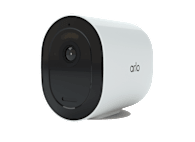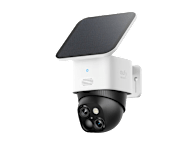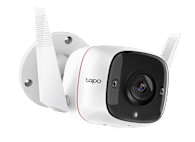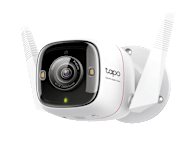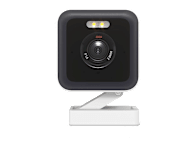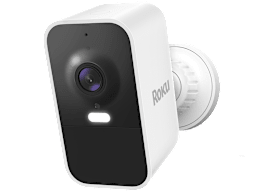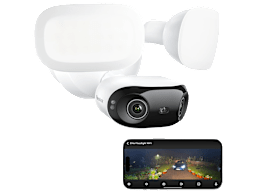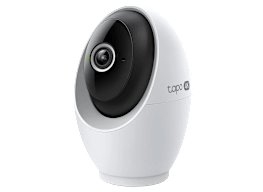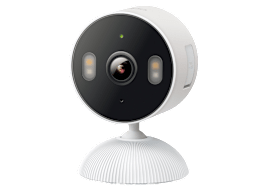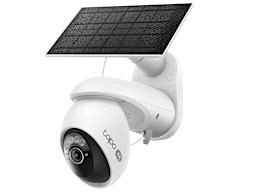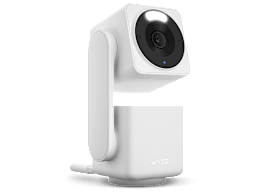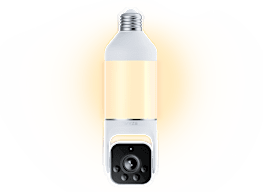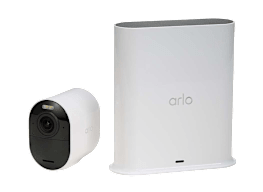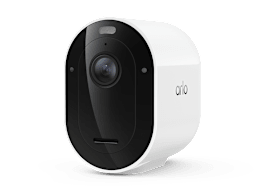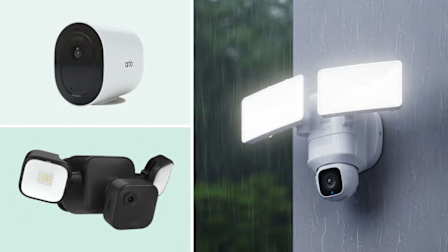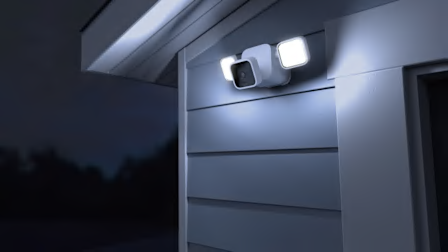10 Best Outdoor Security Cameras of 2025, Lab-Tested and Reviewed
Top outdoor security cameras from brands including Arlo, Eufy, and TP-Link are weather-resistant and can be mounted almost anywhere
When you shop through retailer links on our site, we may earn affiliate commissions. 100% of the fees we collect are used to support our nonprofit mission. Learn more.
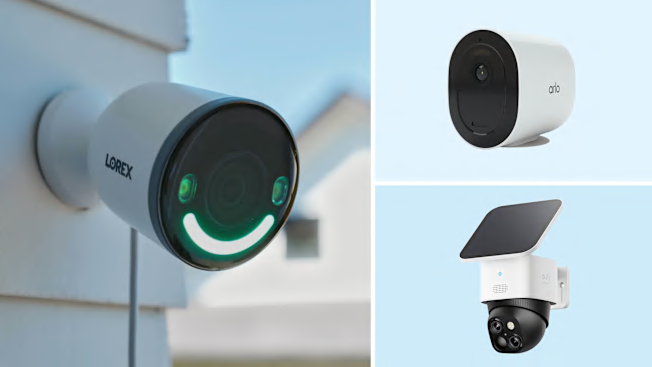
Doorbell cameras are great for keeping an eye on the entrance to your home, but what about your backyard? Or your driveway? You need outdoor security cameras to monitor those areas.
These security cameras are weatherproof, and most run on rechargeable batteries, allowing you to mount them almost anywhere, even to a tree (provided it’s in range of your home’s WiFi). If you have floodlights in these areas, you could even take advantage of their steady stream of power and install specialized floodlight security cameras.
Below you’ll find details on the 10 best outdoor security cameras from our tests, listed in alphabetical order. They’re made by Arlo, Blink, Eufy, Lorex, TP-Link, and Wyze.
Our Top Picks cover a variety of uses, including security cameras with solar panels that stay charged year-round and cellular security cameras that can work in spots farther from your house and its WiFi network. Most of these cameras run on rechargeable batteries, so unless you opt for a model with a solar panel, you’ll need to recharge them periodically. All feature two-way audio for speaking to visitors and work with Amazon Alexa and Google Home.
For more on outdoor cameras, see our complete security camera ratings and guide to the best floodlight security cameras. Interested in indoor security cameras or video doorbell cameras, too? Check out CR’s free home security camera buying guide.
- Arlo Essential (VMC3050-100NAS)
- Arlo Go 2 LTE WiFi
- Blink Mini 2
- Eufy Solo Cam S230
- Eufy SoloCam S340 Wireless Outdoor Security Camera with Dual Lens and Solar Panel
- Lorex 4K Spotlight Outdoor Wi-Fi 6 Security Camera
- TP-Link Tapo C310 2K Outdoor
- TP-Link Tapo C325WB
- TP-Link Tapo C420S2
- Wyze Cam v3 Pro WYZEC3P
Free video storage: None.
Optional subscription costs: Through an Arlo Secure Plus plan, you can get 60 days of cloud video storage for $10 per month for one camera or $20 per month for unlimited cameras. You can add more features, such as in-app emergency response buttons, with Arlo Secure Premium for $30 per month. You can try Arlo Secure free for 30 days, and all plans receive slight discounts if you purchase an annual subscription.
The Arlo Essential 2K (VMC3050-100NAS) is one of Arlo’s newer, more budget-friendly security cameras. It performs well in our tests, with excellent scores for data security and response time, as well as a strong score for video quality. This camera features a built-in spotlight, a siren, and voice/app control via Amazon Alexa and Google Home.
With an Arlo Secure subscription, you can also get 60 days of cloud video storage for motion-triggered video clips, plus additional features such as custom activity zones; person, package, vehicle, and animal detection; smoke/carbon monoxide detection; and custom detection that lets you teach the camera to detect things like a garage door opening or sprinklers turning on. The Premium plan includes everything previously discussed, as well as emergency response buttons in the Arlo app (to request police, fire, or medical services), professional monitoring for Arlo security systems, and access to the Arlo Safe personal safety app.
For a similarly performing version of this camera with a bigger battery, see the Arlo Essential 2K XL (VMC3052-100NAS).
Free video storage: Yes, on a microSD card (sold separately).
Optional subscription costs: Through an Arlo Secure Plus plan, you can get 60 days of cloud video storage for $10 per month for one camera or $20 per month for unlimited cameras. You can add more features, such as in-app emergency response buttons, with Arlo Secure Premium for $30 per month. You can try Arlo Secure free for 30 days, and all plans receive slight discounts if you purchase an annual subscription.
The battery-powered Arlo Go 2 LTE WiFi delivers outstanding video quality in CR’s tests. It also has top-notch data security and response time scores, though its data privacy rating is lackluster. This model features a built-in siren, a rechargeable battery, and voice and app control (via Amazon Alexa and Google Home).
With an Arlo Secure subscription, you can also get 60 days of cloud video storage for motion-triggered video clips, plus additional features such as custom activity zones; person, package, vehicle, and animal detection; smoke/CO detection; and custom detection that lets you teach the camera to detect things like a garage door opening or sprinklers turning on. The Premium plan includes everything previously discussed, as well as emergency response buttons in the Arlo app (to request police, fire, or medical services), professional monitoring for Arlo security systems, and access to the Arlo Safe personal safety app.
Free video storage: Yes, with Blink Sync Module 2 for $50 and on a USB flash drive with a capacity of up to 256 gigabytes (both sold separately).
Optional subscription costs: With a Blink Subscription Plan, you get 60 days of motion-triggered video clips for one camera for $3 per month (or $30 per year), or 60 days of motion-triggered video clips for unlimited cameras for $10 per month (or $100 per year).
The Blink Mini 2 is the first outdoor version of Blink’s budget-friendly wired camera. It performs well in our tests, with high scores for video quality, response time, and data security. Its features include activity zones, a built-in spotlight, voice/app control via Amazon Alexa, and the ability to use the camera’s speaker as a chime for the Blink Video Doorbell. To use the camera outdoors, you’ll need to purchase it with its outdoor power adapter, which costs an extra $10.
With a Blink Subscription Plan, you will gain person detection and the ability to store footage in the cloud, livestream your camera continuously for up to 90 minutes, save recordings of your livestreams, “instantly” watch recordings as soon as they’re done, and share recordings with others.
Free video storage: Yes, using 8 gigabytes of built-in storage, or on a hard drive with a capacity of up to 16 terabytes with an optional HomeBase S380 hub for $150 (hard drive sold separately).
Optional subscription costs: With a Eufy Cloud Storage plan, you can get 30 days of cloud storage that covers one camera for $4 per month or unlimited cameras for $14 per month. You can subscribe to the same plans annually for $40 and $140 per year, respectively.
The Eufy Solo Cam S230 was built for the outdoors. The battery-powered camera uses a top-mounted solar panel for continuous operation and withstands the elements with IP65 water and dust protection. You can install the camera virtually anywhere on your property thanks to a simple snap-on mounting system. While it has basic AI detection with customizable zones and support for Amazon Alexa and Google Home, it earns a subpar score for smart features in CR’s tests.
The S230 sports a 2K camera sensor that offers top-notch recording quality with color night vision. It also has superb responsiveness, and the camera will automatically shine its 600-lumen spotlight when it detects movement. Consumer Reports gives it a strong score for data security, partly because it operates completely locally with on-device AI processing and 8GB of onboard encrypted storage, no cloud subscription required. That said, it only manages a below-average data privacy score. In addition to its built-in storage, you can store footage on a Eufy HomeBase S380 hub (hard drive sold separately), or pay for optional cloud storage.
Free video storage: Yes, using its 8 gigabytes of internal memory.
Optional subscription costs: With a Eufy Cloud Storage plan, you can get 30 days of cloud storage that covers one camera for $4 per month or unlimited cameras for $14 per month. You can subscribe to the same plans annually for $40 and $140 per year, respectively.
The Eufy SoloCam S340 is one of Eufy’s unusual dual-camera models. It has a 3K wide-angle camera and a 2K telephoto camera that are used together to give you up to 8x zoom. This camera performs exceptionally well in our tests, receiving high scores for video quality, response time, data security, and its many free smart features. Its only weak spot is data privacy, but that’s a very common issue with security cameras.
In addition to being a top performer, this Eufy camera offers just about every feature you might need, including local storage, an adjustable solar panel to keep its battery charged, motorized pan-and-tilt to check the camera’s surroundings, motion tracking to follow subjects it’s recording, person and vehicle detection, activity zones, a built-in spotlight for color night vision, a built-in siren, and voice and app control via Amazon Alexa and Google Home.
Free video storage: Yes, on an included 32-gigabyte microSD card.
Optional storage subscription: Through a Lorex Cloud Storage Plan, you can get 30 days of cloud video storage for one camera for $3 per month (or $30 per year) or 30 days of storage for up to 10 cameras at one location for $10 per month (or $100 per year).
The Lorex 4K Spotlight Outdoor Camera receives an excellent score for response time, a very good score for video quality, and decent scores for both data privacy and data security. This camera comes with a 32-gigabyte microSD card for local video storage and features two built-in spotlights, color night vision, smart object recognition (for people, animals, vehicles, and packages), a built-in siren, prerecorded quick response messages you can play for visitors, and compatibility with faster WiFi 6 routers. It’s also compatible with Amazon Alexa and Google Home, allowing you to use voice control on devices that support the virtual assistants. Lorex also offers cloud video storage plans, but none of the camera’s features require a subscription.
Free video storage: Yes, on a microSD card with a capacity of up to 256 gigabytes (sold separately).
Optional storage subscription: Through a Tapo Care Premium plan, you get 30 days of cloud video storage, starting at $3.49 per month (or $35 per year) for one camera and going up to $12 per month (or $120 per year) for 10 cameras.
If you’re searching for a security camera with quick response time and stellar video quality, give the TP-Link Tapo C310 2K Outdoor a close look. This outdoor camera captures video with higher quality than many other security cameras CR tests. Its data privacy rating is lackluster, but it does have strong data security. In addition to voice/app control via Amazon Alexa and Google Home, this model features a built-in siren, activity zones, night vision, and person detection. Videos can be stored locally on up to a 256-gigabyte microSD card (sold separately) or in the cloud with a Tapo Care subscription.
Free video storage: Yes, on a microSD card with a capacity of up to 512 gigabytes (sold separately).
Optional storage subscription: Through a Tapo Care Premium plan, you get 30 days of cloud video storage, starting at $3.49 per month (or $35 per year) for one camera and going up to $12 per month (or $120 per year) for 10 cameras.
The TP-Link Tapo C325WB is a wired security camera with low-light color night vision that TP-Link claims is better than competing cameras. In our tests, it receives high scores for video quality, response time, and data security. Its features include activity zones, object recognition (for people, pets, and vehicles), two built-in spotlights, a siren, and voice/app control with Amazon Alexa and Google Home.
Free video storage: Yes, on a microSD card with a capacity of up to 256 gigabytes (sold separately).
Optional storage subscription: Through a Tapo Care Premium plan, you get 30 days of cloud video storage, starting at $3.49 per month (or $35 per year) for one camera and going up to $12 per month (or $120 per year) for 10 cameras.
The TP-Link Tapo C420S2 performs well across the board in our tests for video quality, response time, and data security. Its data privacy is subpar, but that’s a common problem with security cameras in our tests. This battery-powered two-camera kit features color night vision, activity zones, person detection, pet detection, vehicle detection, a built-in siren, voice/app control via Amazon Alexa and Google Home, and free local video storage on up to a 256-gigabyte microSD card.
Free video storage: Yes, on a microSD card with a capacity of up to 128 gigabytes (sold separately).
Optional subscription costs: Through a Wyze Cam Plus subscription, you get 14 days of cloud storage with advanced detection alerts for one camera for $3 per month. With Wyze Cam Unlimited, you’ll get storage for unlimited cameras, facial recognition, remote arming/disarming features, and a multicam timeline for $10 per month. Wyze Cam Unlimited Pro includes AI descriptive alerts, AI-powered video history search, 60 days of storage for recorded events, and 24/7 emergency dispatch service for $20 per month.
The Wyze Cam v3 Pro is one of the best and most affordable security cameras in our ratings, outperforming models that cost more than twice as much. It receives strong scores across the board in our tests, with its only weak spot being data privacy. This camera is weatherproof for outdoor use and features a built-in spotlight, a siren, color night vision, free on-device person detection, activity zones, voice/app control via Amazon Alexa and Google Home, and local 24/7 video recording.
With a Wyze Cam subscription, you can also add the following features: 14-day cloud video storage, object recognition (for pets, vehicles, and packages), facial recognition, sound detection (such as for a crying baby), and e911 to contact your home’s local emergency dispatcher from the Wyze app.
Here are some of the most common features you’ll find in security cameras right now:
Activity zones: Also called motion zones, this feature allows you to highlight areas of the camera’s field of view, such as a driveway, to monitor for movement—or ignore when there’s movement, such as a busy street.
Person, package, vehicle, and/or animal detection: The camera can detect their presence in its field of view and record footage.
Geofencing: This feature uses your phone’s location so that the camera will record and/or send alerts only when you’re away from home.
e911: You’ll find e911 in the camera’s smartphone app. With it, you can call your home’s local 911 dispatcher directly if there’s an emergency. That could save valuable time if you’re away from home, because usually you’d be connected to the 911 dispatcher closest to where you’re calling from. In that case, you’d need to be put through to your local police department so that you can ask it to check on your property.
Two-way audio: You can speak to a visitor in front of your camera using its built-in microphones and speakers from the camera’s smartphone app.
How CR Tests Home Security Cameras
Our test engineers conduct a variety of tests on home security cameras. These tests reveal video quality under daylight and nighttime lighting conditions, how long it takes for the camera to send smartphone alerts, and useful smart features like person detection. We also evaluate 70 factors related to privacy practices and data security to create data privacy and data security scores for each camera. For data privacy, we evaluate how well each manufacturer keeps your data private and whether they share it with third parties. For data security, we judge each manufacturer’s security practices, such as whether they use encryption (a good practice) or default passwords (a bad practice).
Last year, we updated our testing methodology to reflect changes in the technology.
Security cameras have gotten faster at loading videos and sending notifications since we started testing them in 2017, so we’ve adjusted our response-time test to reflect those improvements and push manufacturers to do even better. We no longer factor smart features that require a subscription into our smart features score. We also now place greater emphasis on our data security and response-time tests to help you avoid purchasing a security camera that is slower or more susceptible to security problems than its competitors.
For more information on our in-depth testing process, see our home security camera buying guide.


















